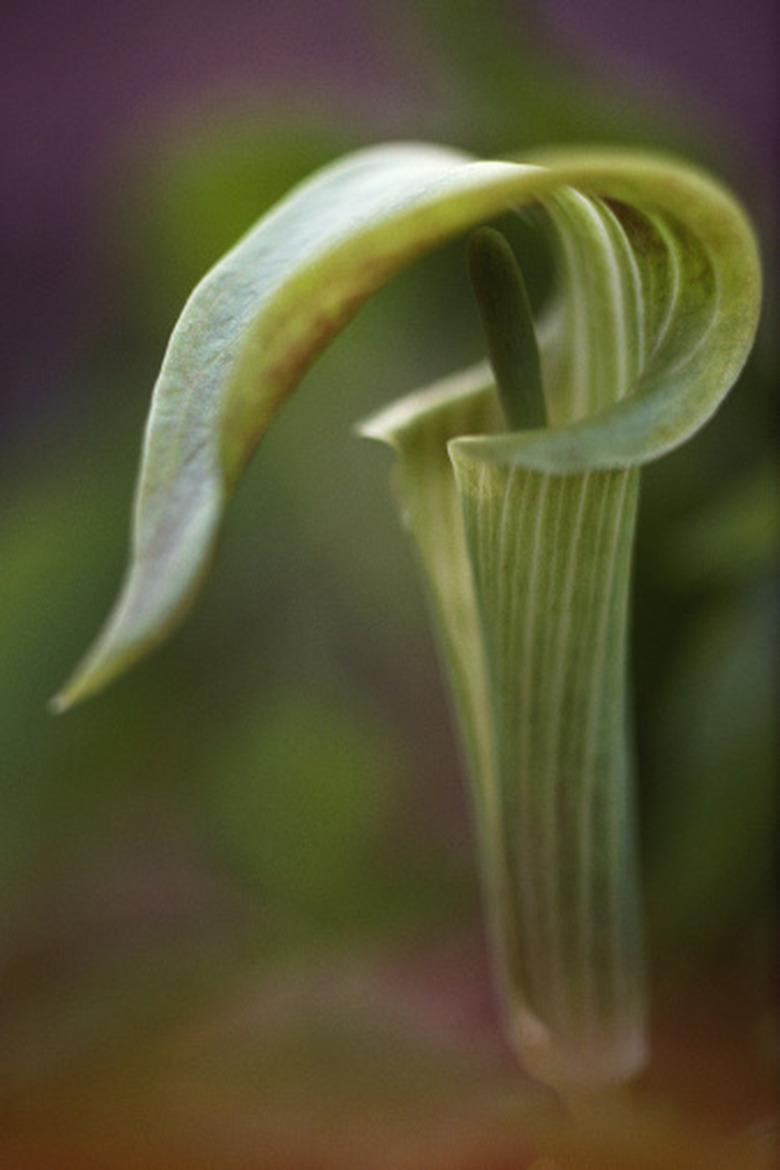How To Find Ginseng In October In Missouri
Ginseng is indigenous to eastern and central North America. Long used in Native American medicine, it is prized by herbalists today. Ginseng commands high prices and has been endangered by over-collecting. Digging and trading ginseng in Missouri is regulated. Harvesting, with the landowner's permission, is legal from September 1 through December 31. Harvesting ginseng on most state land is not permitted. A permit is required to remove ginseng for personal use from U.S. Forest Service land, and may be obtained from the Forest Service.
Preparation
Step 1
Study photographs in books and online to aid ginseng identification. Seek pictures of how ginseng looks at different stages of growth. Note particularly how it appears in fall in Missouri — by October, it will be yellowing. Ensure you can distinguish young ginseng from poison ivy, because they are similar in appearance.
Step 2
Familiarize yourself with native Missouri "indicator plants," near which ginseng commonly grows, such as ash, elm, sugar maple, oak, hickory, rattlesnake fern, Jack-in-the-pulpit, spleenwort, May apple and wild ginger. Read the regulations on harvesting ginseng in Missouri.
Step 3
Select mature hardwood forest giving heavy shade and with damp, yet well-drained soil. Ensure that if you do not own this woodland, you obtain permission from the landowner.
The Hunt
Step 1
Focus your search on north and east-facing slopes. Look for Missouri native "indicator plants." Seek ginseng plants among grapevines and shady thickets.
Step 2
Look for the bright red berries of mature ginseng. Watch also for plants with yellow leaves. After fruiting, plants concentrate a growth spurt into the root, and drooping, yellow leaves signify that a plant has completed root growth.
Step 3
Scrape away the leaves from around the base of the ginseng plant to expose the root top. Determine which way the root is growing. Follow the root, scraping to expose the full extent, including forks. Scrape or dig carefully under and around it, taking care to avoid damage.
Step 4
Follow Missouri regulations governing ginseng harvest. Collect ginseng only from areas where several large plants are growing. Leave some plants untouched. Do not harvest plants that have not yet produced ripe berries. Dig only plants with at least three separate flowering prongs, often called "three-prong ginseng." Keep this mature foliage attached to the root in case of inspection by law enforcement – this is a legal requirement. Do not remove this foliage until you are home.
Step 5
Examine the roots you find. Count the bud scars on the root – they will equal one per year of life. Re-plant roots under five years of age (fewer than five scars). Plant all seeds from the plants you dig. Squeeze the seeds from the ripe berries, and then plant them one half-inch deep and 6 inches apart. Ensure you plant all within 100 feet of the parent plant – ginseng is "particular" about its growing conditions.
Things Needed
- Permit from forest service or permission from landowner
- Hoe or screwdriver
- Sack or bag
TL;DR (Too Long; Didn't Read)
Find the bare, dried up stalks of last year's plants among the stand of ginseng. Dig around these – ginseng roots often "skip a year" before growing a new plant, and these old dry stems can indicate the strongest roots.
Warning
Digging ginseng anywhere in Missouri without the landowner's permission is a criminal act.
References
- "Ginseng: How to Find, Grow and Use America's Forest Gold;" Kim Pritts; 1995
- Ginseng Hunter Blogsot: How to Find and Dig Ginseng
- Virginia Tech Special Forest Products Program; Ginseng Fact Sheet; 2001
Cite This Article
MLA
Wedgwood, Tamasin. "How To Find Ginseng In October In Missouri" sciencing.com, https://www.sciencing.com/ginseng-october-missouri-8197430/. 22 November 2019.
APA
Wedgwood, Tamasin. (2019, November 22). How To Find Ginseng In October In Missouri. sciencing.com. Retrieved from https://www.sciencing.com/ginseng-october-missouri-8197430/
Chicago
Wedgwood, Tamasin. How To Find Ginseng In October In Missouri last modified March 24, 2022. https://www.sciencing.com/ginseng-october-missouri-8197430/

